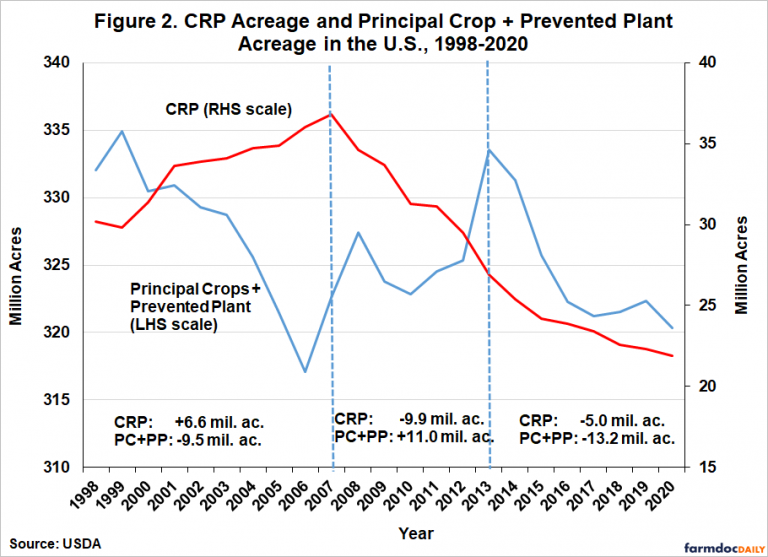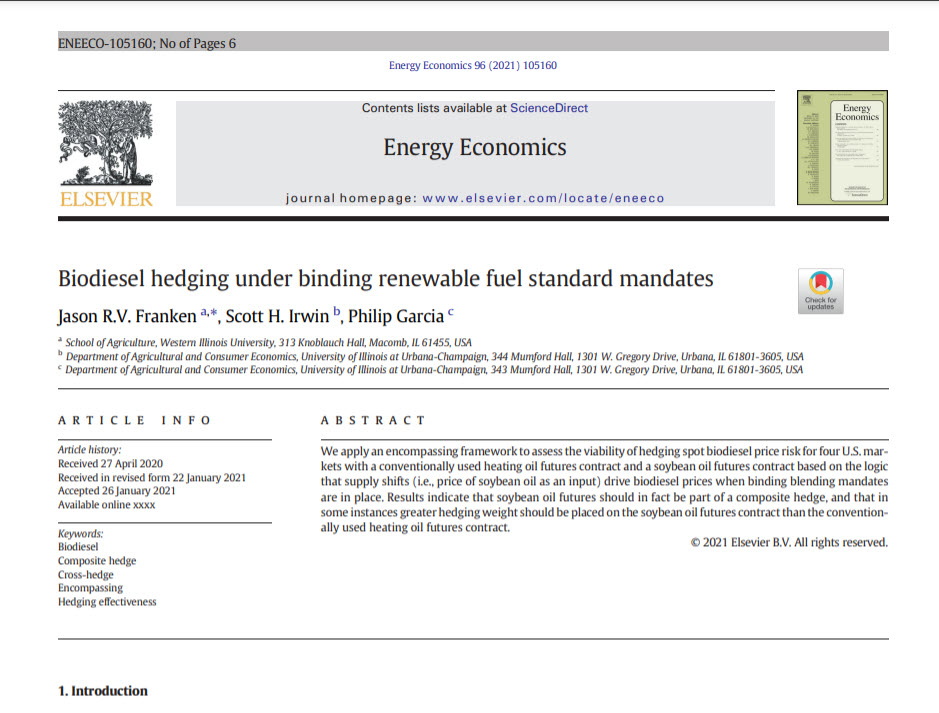
1. Back on crop acres with new #FDD article this week. Tried to figure out what happened to the 14.4 million acres that left US crop production after 2014. farmdocdaily.illinois.edu/2021/06/where-…
2. Here is my accounting of total US crop acreage. Notice that total was pretty stable from 1998-2014 around the average of 359.4 million acres. Then down down down through 2020. Total drop after 2014 of 14.4 million acres through 2020. 

3. Started analysis with acres going into and out of CRP. Anything funny going on there. The answer is yes. Should be an inverse relationship between CRP and principal crop plus prevent plant acres. This held through 2014, then both declined. What gives? 

4. Fortunately USDA has done research tracking every acre of CRP ground that expired from 2013-2016. Vast majority back into crops of some kind. My conclusion: drop in principal crop acres was so big that it swamped the positive impact of acreage coming out of CRP after 2014 

5. Next step was to look at where the drop in total crop acres was the biggest after 2014. As this map shows, declines in all but a handful of states. But biggest declines mainly in Great Plains states. Important clue about what happened to the missing acres. 

6. So I next looked at planted acreage changes for major crops in top 10 states with loss of total crop acres between 2014 and 2020. Large drops in wheat and hay acres pretty much across the board in these states. 

7. So my conclusion is that the drop in total crop acres after 2014 in the US can be mainly traced back to decline in wheat and hay acreage in the Great Plains. Not the entire story but the main story. 

8. So why should anyone in the market care about this? The reason is that total size of "acreage pie" constrains acreage of all crops, including corn and soybeans. Unlikely that a big pool of additional acres is sitting out there this year to increase the size of pie. 

9. But those 14.4 million acres are sitting out there and could come back into production at some point in the future. 

10. My forecast of total crop acreage for 2021 after adjusting for downward bias in March numbers. From an earlier article. So I expect total crop size in June report to go up 2.8 million acres. But that is it. Will see next week! 

11. Meant to also add that we don’t know exactly what happened to the crop acres that went out of production. Most likely pasture fallow or range.
• • •
Missing some Tweet in this thread? You can try to
force a refresh





